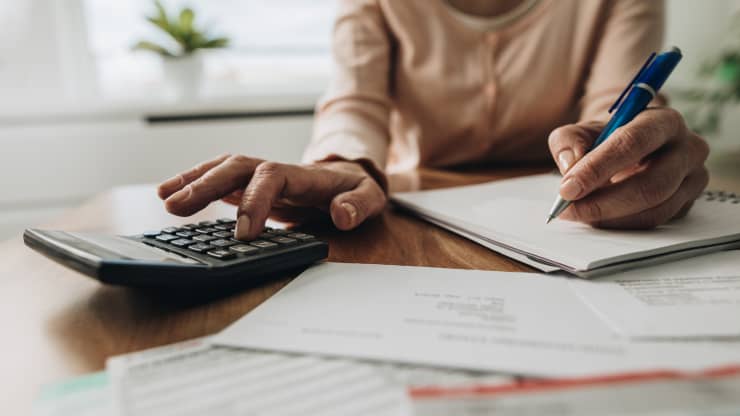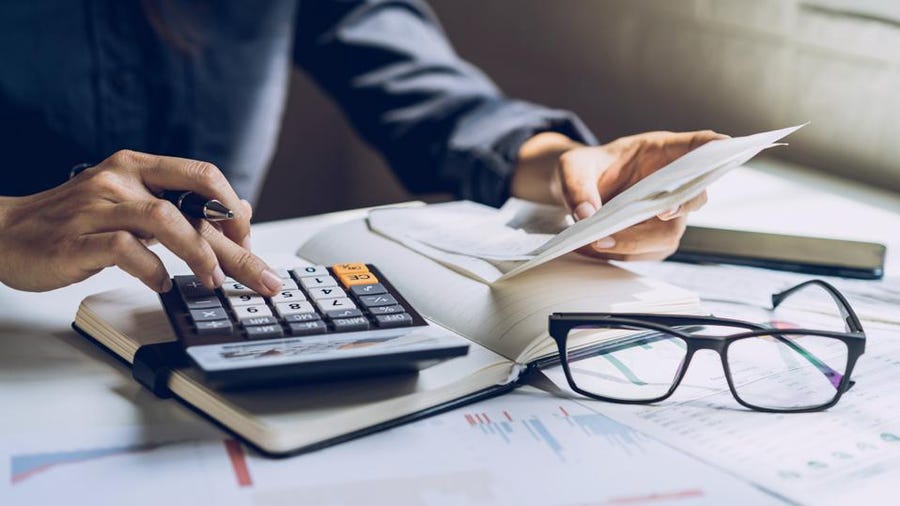How To Calculate Your Own Inflation Rate - Calculating Personal Inflation Rate And Why It Matters
Prices have been going up across the U.S. economy, whether you're at the grocery store or the gas station. But how much have your own household costs gone up? How does that compare to the average American? Knowing how to calculate your own inflation rate can help you figure out the answers to these questions.
Author:James PierceReviewer:Camilo WoodJul 11, 202213 Shares700 Views

Prices have been going up across the U.S. economy, whether you're at the grocery store or the gas station.
But how much have your own household costs gone up? How does that compare to the average American?
Knowing how to calculate your own inflation ratecan help you figure out the answers to these questions.
People often use the consumer price index to measure inflation.
In May 2022, households paid 8.6% more for a basket of goods and services than they did in May 2021. This was the largest annual increase in more than 40 years.
What Is Inflation?
First, let's talk about how inflation works.
When things like a quart of milk or a gallon of gas cost more now than they did in the past, this is called inflation.
Price increases hurt your ability to buy things, but a little inflation isn't bad for the economy as a whole.
It's the juice that makes us want to save and invest our money instead of just keeping it in cash.
Too much inflation, on the other hand, can be bad.
Right now, prices are going up by 7.5% from one year to the next, but wages aren't growing fast enough to keep up. Inflation-adjusted earnings were down 1.7% in January compared to the same month last year.
So, the Federal Reserve, whose job it is to keep prices stable, has said that it will spend 2022 trying to get the annual rate of inflation closer to 2%.
Bond prices, which are affected by rate hikes and inflation, show that traders think the Fed will get things under control in the long run.
But if you're really worried about inflation, it might help to take a longer-term view.
Christopher Sorrow, vice president at Probity Advisors in Dallas, said,
“„We tend to put too much weight on current events. From a planning point of view, runaway inflation is only happening for a short time.
The Importance Of A Personal Inflation Rate
What would you say about yourself?
Even though the official inflation rates are important, they don't take into account all of the things that affect your personal costs.
At the very least, where you live can make a big difference.
In cities like Nashville and Austin, home prices are going up, making it more expensive to buy a home and making property taxes go up.
So how your household works affects your personal inflation rate.
If you work from home, you probably aren't feeling the pain of sharply higher gas prices. In the 12 months up to January, a gallon of regular unleaded gas has gone up by more than 40%.
Using an electric vehicle?
Since the price per KWH hasn't changed in a year, that's a good way to deal with inflation.
Vegan?
You've been able to avoid the worst effects of rising food prices.
In the 12 months up to January, the average price of fruits and vegetables went up by 5.6%, while the price of meat, poultry, fish, and eggs went up by 12.2%.
Calculating Your Personal Inflation Rate
Here's what economists say is the easiest way to get a rough idea of your own annual inflation rate.
- The first thing to do is figure out how much of your money you spend on things like food, energy, clothing, housing, and entertainment. To do this, you'll need to look at your bank and credit card statements from the past year to find the exact amounts you spent. The U.S. Bureau of Labor Statistics puts out a detailed list that can help you organize your purchases by category.
- Figure out the "weights" of your categories. This weighting is basically the amount of money you spend in each bucket. This weighting is called "relative importance" in the consumer price index. To do this, add up everything you've spent in each category.To figure out the category weight, divide each number by the total amount you spend each year. For example, let's say you spent $50,000 on you home from May 2021 to May 2022. You spent $17,000 on rent, which was 34% of the total, and $6,000 on food, which was 12% of the total. Their weights in each category would be 0.12 and 0.34.
- Again, look at the BLS table of detailed spending categories. The "unadjusted percent change" column shows how much the price of each item goes up on average each year. For example, from May 2016 to May 2017, rent payments went up by 5.5%. In the same time period, the price of food you buy to eat at home (groceries) went up by 11.9%.
- Step 2: Multiply the category weights by the percentage change for each category each year from Step 3. In the above example, to figure out the rent, you would multiply 0.34 by 5.5. Add 0.12 to 11.9 to get food. And so on for every other type of spending. Add up the totals from step 4 to figure out your personal inflation rate. In the example given above, 1.87 + 1.42 + etc. = This number is a percentage of your annual inflation rate.
- Compare your rate to the average rate in the country. If the percentage of your annual spending through May is less than 8.6%, it means that your costs haven't gone up as much as the average American's.
If the number is higher, it means that your costs have gone up more over the past year. Of course, most people in a household think in terms of dollars and cents.
A More Precise Way To Calculate Your Rate
Based on the different goods and services and amounts that each household buys, the above calculation compares your household to the average American household.
But the formula uses the average prices for these goods and services, so it's not a very personalized calculation.
Consumers can do some more math to get a better idea of how their spending has changed from year to year:
- Add up all the expenses from your bank and credit card statements from the last 12 months and the year before.
- Subtract the totals and divide by the amount spent in the first year. For example, let's say that my spending was $50,000 from May 2021 to May 2022 and $45,000 from May 2020 to May 2021. Divide the difference ($5,000) into $45,000.
- Multiply that number from step 2 by 100 to find your personal annual inflation rate.
In the previous example, you would multiply 0.111 by 100.
During that time period, your personal annual inflation rate would have been 11.1%.
Ways To Minimize The Impact Of Inflation
If these numbers make you think, there are many ways to deal with your own inflation rate.
- Cut back on the extras.Sorrow said, "We all have 10% of our spending that we can cut." For instance, you have to eat. Getting groceries is one thing, but going out to eat or ordering food is something else. If you spend less on food that you don't have to eat, you might be able to save some money.
- Get a raise.If you haven't gotten a raise yet, now is the time to start talking about it. The average wage growth hit a low point this past spring, but it is now going back up. You could also think about joining the Great Resignation. According to data from the Atlanta Federal Reserve, the median wage growth for people who switched jobs in the last year was 5.8%, while it was only 4.7% for people who stayed in the same job.
- Hold off on Social Security.If you're in your 60s, you've probably heard a lot about how delaying Social Security can pay off. When you wait longer to claim benefits, you not only get a bigger benefit, but you also get more money because the cost of living goes up every year.
- Care for your things (and yourself). Sorrow said, "An ounce of prevention now can help you avoid bigger, more expensive problems later." Maintain expensive things like your car and air conditioner. The same is true for doctor visits.
- Make plans.Save money for Junior's college costs by putting it in a 529 plan and taking advantage of the growth that comes from compounding.
People Also Ask
What Is Your Personal Inflation?
Figure out the difference and divide it by your April 2021 monthly costs.
For example, if you spent $5300 in April 2022 and $5050 in April 2021, your personal inflation rate is 4.9 percent (250 divided by 5050).
How Much Do You Need To Make To Keep Up With Inflation?
If you earn an average annual return of 6 percent, which is a fairly conservative goal given that the stock market has historically given an average annual return of around 7 percent after accounting for inflation, the $5 you invested in 2000 could be worth $16 today, which is about enough to buy 1.5 of those movie tickets.
How Do You Calculate Inflation Over Multiple Years?
Take the price at the end of the period and divide it by the price at the beginning.
For example, if the price of gas started at $1.40 and went up to $2.40 over a period of eight years, and you wanted to figure out the annual inflation rate, you would divide $2.40 by $1.40 to get 1.714285714.
Conclusion
But there are a few exceptions.
For one thing, you probably won't be able to track any cash spending.
You may have also tried to find cheaper ways to do things, like switching to less expensive foods or driving less to save money on gas.
All of this means that your calculation might not be perfect, but it will be close.

James Pierce
Author

Camilo Wood
Reviewer
Latest Articles
Popular Articles
